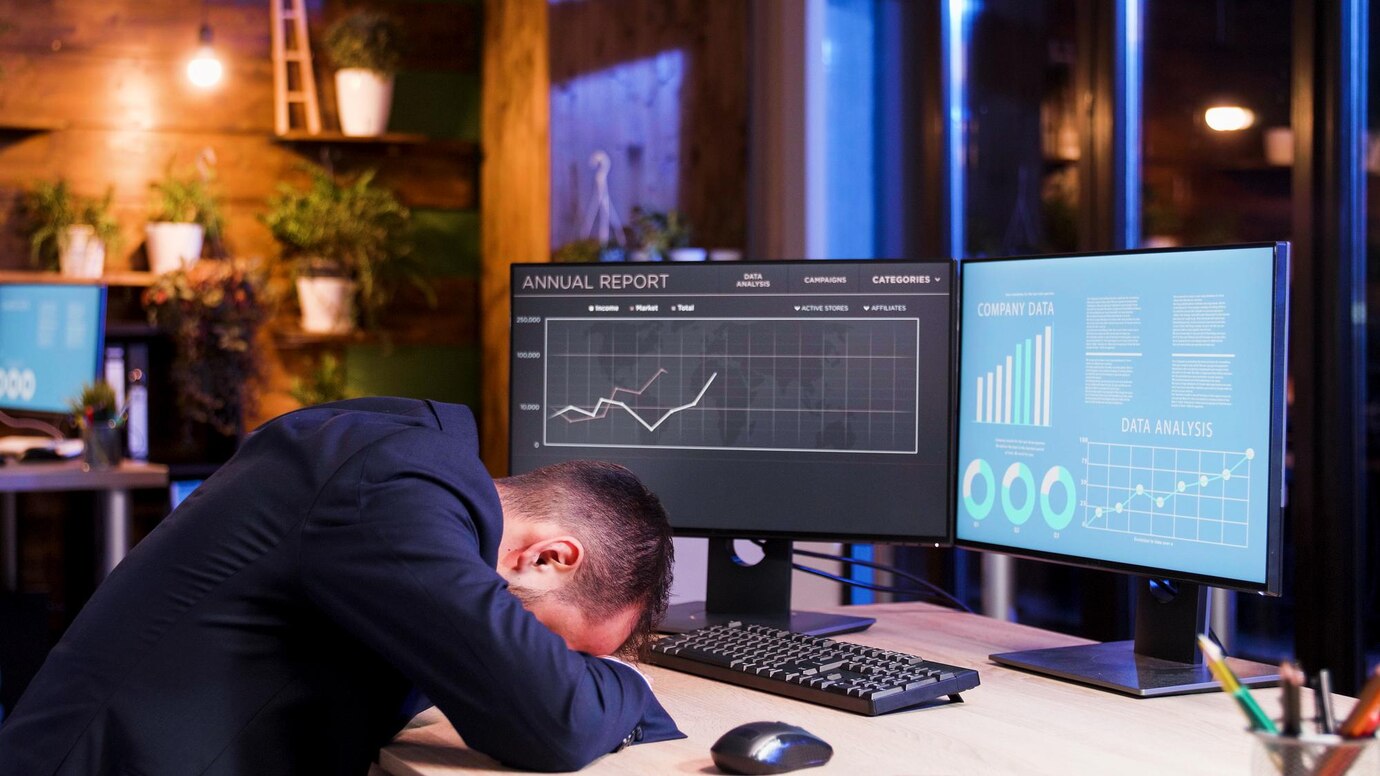The allure of automated trading bots is undeniable, but are these tools foolproof? This article examines the potential shortcomings of trading bots, exploring the reasons behind their failures and offering insights into mitigating these risks. By understanding the limitations of bots, you can make informed decisions about incorporating them into your trading strategies.
Understanding Trading Bots
Trading bots are sophisticated software programs designed to automate the process of buying and selling financial instruments on the market. They serve as a technological bridge between traders and the complexities of the financial landscape. These bots operate by following pre-programmed rules and executing trades based on various parameters.
These automated systems have gained popularity due to their ability to analyze market data swiftly and execute trades at speeds beyond human capacity. They eliminate the emotional aspect of trading, as they operate solely based on algorithms and predefined strategies. Traders can customize these bots to align with their risk tolerance, investment goals, and preferred trading style.
In essence, understanding trading bots involves recognizing them as powerful tools that streamline trading activities, offering efficiency and precision in navigating the dynamic world of financial markets.
Factors Influencing Trading Bot Performance
The effectiveness of trading bots is contingent on a myriad of factors. Understanding these influences is crucial for traders seeking optimal performance from their automated systems. Here are key elements that play a pivotal role:
- Market Conditions:
- Volatility: Sudden market swings can impact bot performance.
- Liquidity: Bots may face challenges in illiquid markets.
- Programming and Algorithm Quality:
- Code Efficiency: Well-optimized algorithms contribute to faster execution.
- Strategy Effectiveness: The quality of the trading strategy directly affects outcomes.
- Technical Issues:
- Connectivity: Unstable internet or server issues can disrupt bot operations.
- Software Updates: Regular updates are essential to adapt to changing market conditions.
Acknowledging these factors and addressing them proactively is essential for traders to enhance the reliability and efficiency of their trading bots.
Instances of Trading Bot Failures
While trading bots are powerful tools, historical instances reveal their susceptibility to failures, often resulting from unforeseen circumstances and glitches in the algorithmic logic. Here are some noteworthy examples:
- Flash Crash of 2010: In May 2010, the U.S. stock market experienced a sudden and severe decline, known as the “Flash Crash.” Some trading bots exacerbated the situation by rapidly selling off large volumes of securities, contributing to the market chaos.
- Binance API Exploitation: Binance, a prominent cryptocurrency exchange, faced a security breach in 2019. Hackers exploited vulnerabilities in the API (Application Programming Interface) of trading bots, leading to unauthorized access and significant financial losses for users.
- Knight Capital Group: In 2012, Knight Capital, a well-established trading firm, suffered a catastrophic failure due to a flawed software update in their trading algorithm. This glitch led to millions in losses within a short span, showcasing the potential risks associated with algorithmic trading.
These instances underscore the importance of rigorous testing, constant monitoring, and risk management in the deployment of trading bots. Learning from these failures is crucial for traders and developers to enhance the robustness of automated trading systems.
Strategies to Mitigate Trading Bot Failures
Effectively mitigating the risks associated with trading bot failures requires a proactive approach and the implementation of robust strategies. Here are two key areas to focus on:
- Regular Monitoring and Updates:
- Establishing Routine Checks: Regularly monitor the performance of trading bots to identify any irregularities or deviations from expected behavior.
- Continuous Testing: Implement a comprehensive testing protocol for bot algorithms, simulating various market conditions to uncover potential weaknesses.
- Timely Updates: Stay informed about market trends and make necessary updates to the bot’s algorithms to adapt to evolving conditions and mitigate the risk of outdated strategies.
- Risk Management:
- Position Sizing: Determine the appropriate size for each trade based on risk tolerance to prevent significant losses in case of adverse market movements.
- Stop-Loss Mechanisms: Implement automatic stop-loss mechanisms to limit potential losses and protect the investment capital.
- Diversification: Spread investments across various assets and markets to reduce dependency on a single strategy or asset class, minimizing the impact of failures in a specific area.
By incorporating these strategies, traders can significantly reduce the likelihood of trading bot failures and enhance the overall resilience of their automated trading systems.
Success Stories of Trading Bots
In the realm of automated trading, there exist compelling success stories that highlight the positive impact of well-designed and effectively implemented trading bots. These stories not only showcase the potential for profitability but also shed light on key factors contributing to their success.
One notable success involves the use of advanced machine learning algorithms in predicting market trends. Traders leveraging these sophisticated models have reported consistent profits, thanks to the bots’ ability to adapt to changing market conditions and identify lucrative opportunities.
Additionally, some trading bots have excelled in cryptocurrency markets, where volatility is inherent. Bots equipped with adaptive strategies tailored to the unique nature of digital assets have demonstrated remarkable success, outperforming traditional trading methods.
Furthermore, success stories often emphasize the importance of continuous refinement and learning. Traders who actively analyze and adjust their bot strategies based on performance data and market trends tend to achieve sustained success in the dynamic landscape of financial markets. These success stories underscore the potential for trading bots to serve as valuable tools when aligned with strategic vision and a commitment to ongoing optimization.
Advancements in Trading Bot Technology
The landscape of trading bot technology is constantly evolving, driven by innovations and advancements that shape the future of automated trading. Here are key developments categorized for a comprehensive understanding:
- Machine Learning and AI Integration:
- Deep Learning Algorithms: Integration of neural networks for enhanced pattern recognition and decision-making.
- Natural Language Processing (NLP): Bots capable of analyzing news sentiment and social media for real-time market insights.
- Evolving Algorithms:
- Quantum Computing: Exploring the potential of quantum algorithms for faster and more complex calculations.
- Reinforcement Learning: Bots that learn and adapt to market conditions through trial and error, improving decision-making over time.
- Future Prospects:
- Decentralized Finance (DeFi): Bots exploring opportunities in decentralized platforms, offering more diverse investment options.
- Interconnected Bots: Development of systems where trading bots can communicate and collaborate, creating a networked approach for enhanced decision-making.
These advancements signal a paradigm shift in the capabilities of trading bots, moving beyond rule-based strategies to more adaptive and intelligent systems. As technology continues to progress, traders can anticipate even more sophisticated and efficient automated trading solutions.
The Human Element in Trading
Automated trading systems, while powerful, often require the human touch to navigate the complexities of financial markets. Understanding the symbiotic relationship between automated processes and human intuition is crucial for successful trading.
Human Oversight and Decision-Making
In the realm of trading, humans provide the essential oversight needed to interpret nuanced market conditions. While trading bots can execute predefined strategies, human intuition plays a pivotal role in discerning unusual patterns, unexpected events, and interpreting qualitative data. Traders must remain vigilant, ready to intervene when market dynamics deviate from the anticipated.
The Importance of Human Intuition
Automated systems lack the innate ability to understand external factors that may influence market movements. Human intuition, honed through experience and a deep understanding of market dynamics, allows traders to make nuanced decisions based on broader economic trends, geopolitical events, and other contextual factors. Striking the right balance between automation and human intervention is essential for optimal trading outcomes.
Recognizing the significance of the human element in trading ensures that automated systems complement human skills rather than replace them entirely. The synergy between technology and human insight maximizes the potential for success in the ever-changing landscape of financial markets.

